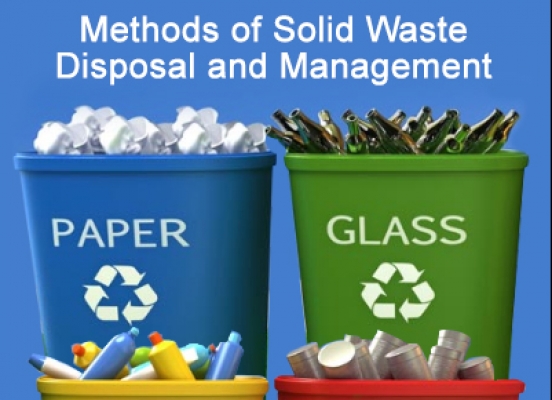Solid Waste Disposal and Management
Garbage arising from human or animal activities, that is abandoned as unwanted and useless is referred to as solid waste. Generally, it is generated from industrial, residential, and commercial activities in a given area, and maybe handled in a variety of ways. However, waste can be categorized based on materials such as paper, plastic, glass, metal, and organic waste. Solid waste disposal must be managed systematically to ensure environmental best practices. Solid waste disposal and management is a critical aspect of environmental hygiene and it needs to be incorporated into environmental planning.
Solid waste disposal and management include planning, administrative, financial, engineering, and legal functions. It is typically the job of the generator, subject to local, national, and even international authorities.
Introduction:
Solid waste disposal management is usually referred to as the process of collecting and treating solid wastes. It provides solutions for recycling items that do not belong to garbage or trash. Solid waste management can be described as how solid waste can be changed and used as a valuable resource.
Improper disposal of municipal solid waste can create unsanitary conditions, and these conditions, in turn, lead to pollution of the environment. Diseases can be spread by rodents and insects. The tasks of solid waste disposal management are complex technical challenges. They can also pose a wide variety of economic, administrative, and social problems that must be changed and solved.
Methods of Solid Waste Disposal and Management:
Here are the methods of solid waste disposal and management:
1) Solid Waste Open Burning
2) Sea dumping process
3) Solid wastes sanitary landfills
4) Incineration method
5) Composting process
6) Disposal by Ploughing into the fields
7) Disposal by hog feeding
8) Salvaging procedure
9) Fermentation/biological digestion
1. Solid Waste Open Burning
Solid waste open burning is not the perfect method in the present scenario.
2. Sea Dumping Process
This sea dumping process can be carried out only in coastal cities. This is a very costly procedure and not environment friendly.
3. Solid wastes sanitary landfills
The solid waste sanitary landfills process is simple, clean, and effective. In this procedure, layers are compressed with some mechanical equipment and covered with earth, leveled, and compacted. A deep trench of 3 to 5 m is excavated and micro-organisms act on the organic matter and degrade them.
In this procedure, refuse depth is generally limited to 2m. Facultative bacteria hydrolyze complex organic matter into simpler water-soluble organics
4. Incineration method
The incineration method is suitable for combustible refuse. High operation costs and construction are involved in this procedure. This method would be suited in crowded cities where sites for landfilling are not available.
It can be used to reduce the volume of solid wastes for landfilling.
5. Composting process
The composting process is similar to sanitary land-filling and it is popular in developing countries. Decomposable organic matter is separated and composted in this procedure. Yields are stable end products and good soil conditioners. They can be used as a base for fertilizers.
Two methods have been used in this process:
a)Open Window Composting
b) Mechanical Composting
6. Disposal by Ploughing into the fields
Disposal by plowing into the fields is not commonly used. These disposals are not environment friendly in general.
7. Disposal by hog feeding
Disposal by hog feeding is not a general procedure in India. Garbage disposal into sewers including BOD and TSS increases by 20-30%. Refuse is ground well in grinders and then fed into sewers.
8. Salvaging procedure
Materials such as metal, paper, glass, rags, certain types of plastic, and so on can be salvaged, recycled, and reused.
9. Fermentation/biological digestion
Biodegradable wastes are converted to compost and recycling can be done whenever possible. Hazardous wastes can be disposed of using suitable methods.
Conclusion:
Following these procedures/processes can help to manage solid waste disposal.
To know more, please check Pulp and Paper Technology.

